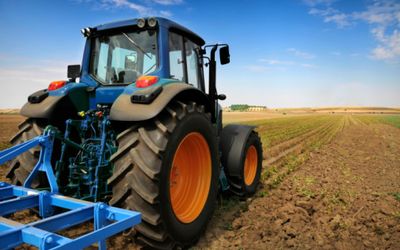ONCE the world’s seventh biggest exporter of sorghum, SA may have to import a significant amount of the grain this year, as risk-averse farmers are thought to have planted less of the crop despite its ability to tolerate hot, dry weather.
The country may have to ship in as much as 90,000 tonnes of sorghum in the 2016-17 production year, according to estimates from Grain SA. This would be an increase on imports of 27,000 tonnes last year and 8,000 tonnes in the previous year.
Sorghum is commonly used in the production of beer and in animal feed and is often regarded as a replacement crop for maize due to its low input requirement costs and its ability to withstand severe drought. It is the fifth most important cereal crop in the world.
Up until 2014, SA was a net exporter of the grain, and the Southern African Development Community region accounted for 99% of total exports of the grain.
Grain SA economist Wandile Sihlobo said the fact that SA would have to import a vast amount of sorghum spoke to the seriousness of the drought, which has devastaed most summer crops in the key planting areas of the Free State and North West.
"Our preliminary survey shows that South African producers have planted roughly 20,000ha of sorghum this year (which was about a third) of the intended 74,750ha," said Mr Sihlobo.
SA consumes about 167,000 tonnes of sorghum each year. Its production year runs from March to February the following year.
Grain SA was reluctant to forecast the size of the expected sorghum harvest for 2016-17, saying a more accurate projection of these figures would be revealed in the crop estimate committee’s first production estimates report due to be released on Tuesday.
But Mr Sihlobo agreed that this season’s harvest would be significantly lower than the 116,500 tonnes SA produced last season and the 265,000 tonnes the country harvested in 2014.
However, even if the crop estimates committee report shows farmers to have planted more hectares of sorghum than Grain SA’s estimates, the harvest could still be hampered should SA not receive enough rainfall, said AgriSA economist Thabi Nkosi. "It all depends on the follow-up rains. We will need good rains throughout to ensure a high yield."
Argentina, the US and Australia, which have previously supplied SA with sorghum, are likely to do so once again this year.
But imports will come with a hefty price tag, owing to the sharp depreciation of the rand.
Without a doubt, consumers will not be spared the higher prices as manufacturers of cereals and other grains will be forced to pass costs on to them.





















Change: 2.48%
Change: 2.53%
Change: 2.08%
Change: 1.97%
Change: 5.33%
Data supplied by Profile Data
Change: 0.00%
Change: 0.00%
Change: 2.48%
Change: 0.00%
Change: 0.00%
Data supplied by Profile Data
Change: 0.44%
Change: 0.11%
Change: -0.76%
Change: -0.92%
Change: -0.23%
Data supplied by Profile Data
Change: 0.00%
Change: 0.00%
Change: 0.00%
Change: 0.00%
Change: 0.00%
Data supplied by Profile Data